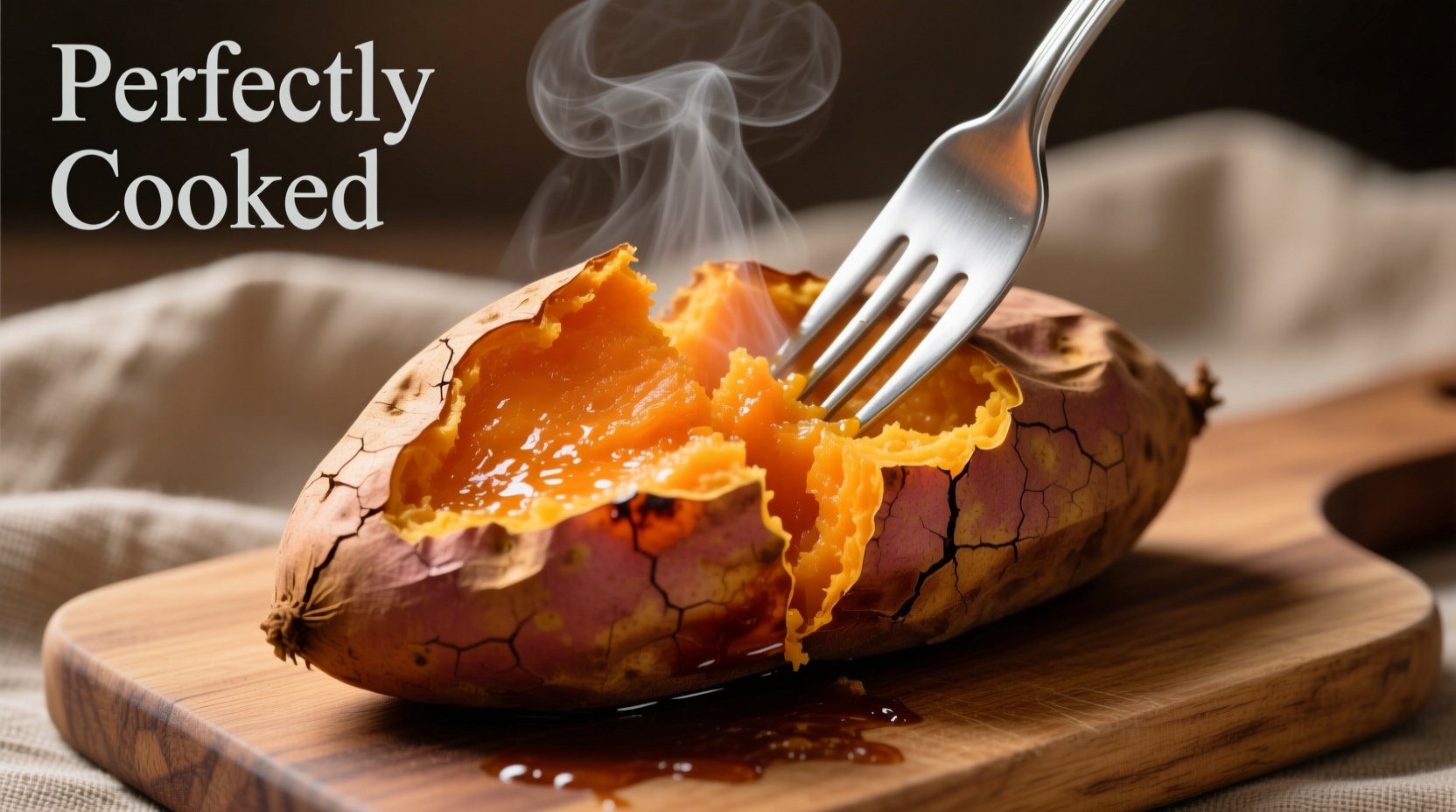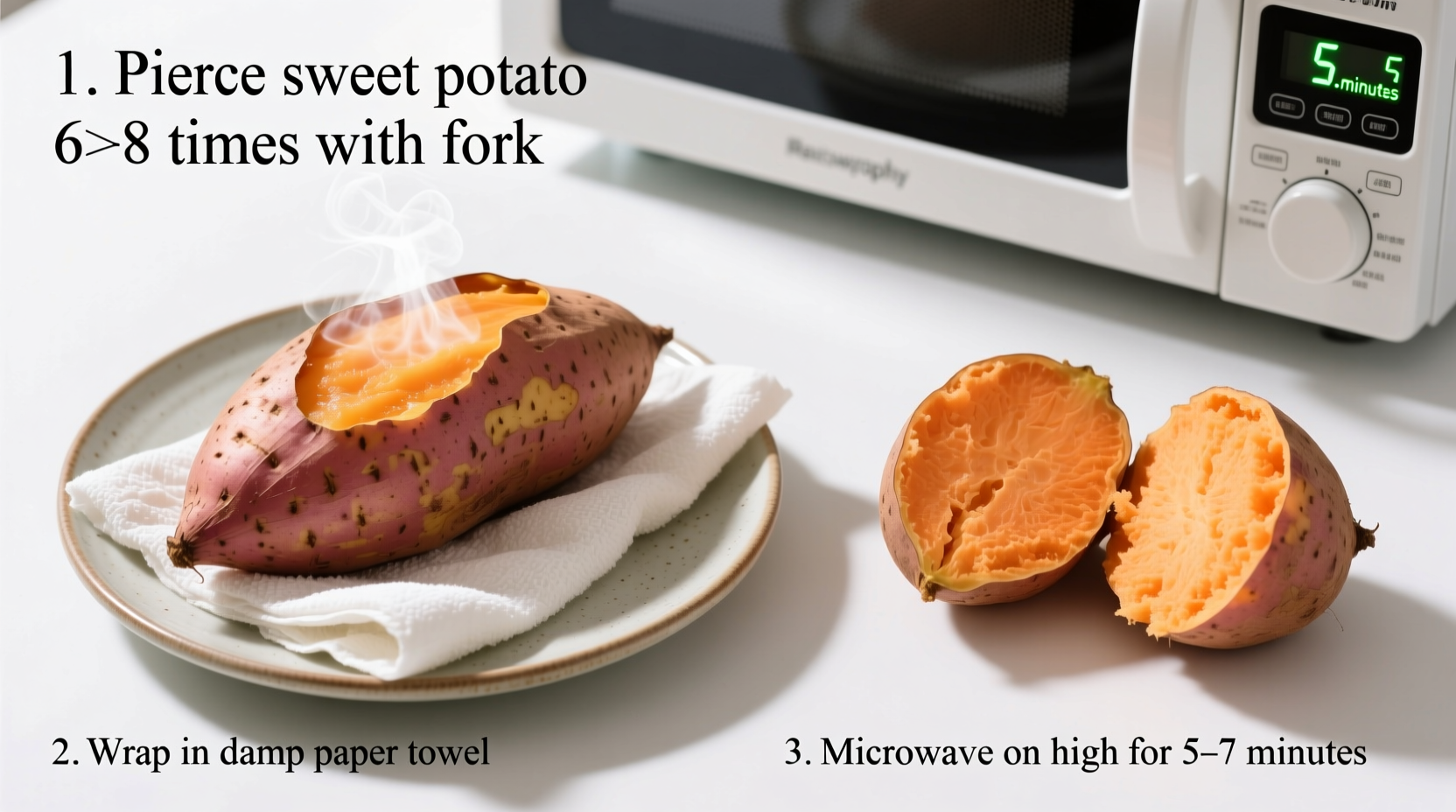Looking for the fastest way to enjoy a fluffy, nutrient-packed sweet potato? Microwaving transforms this superfood from raw to ready in minutes, not hours. As a professional chef who's taught thousands of home cooks, I've perfected this technique through years of testing in both restaurant kitchens and home settings. You'll get restaurant-quality results without heating up your entire kitchen.
Why Microwaving Beats Traditional Baking
Microwaving sweet potatoes isn't just convenient—it's scientifically superior for preserving nutrients. According to USDA food safety guidelines, shorter cooking times help maintain higher levels of heat-sensitive vitamins like vitamin C and B vitamins. The microwave's targeted energy penetrates the potato evenly, creating steam pressure that cooks the interior while keeping the skin intact.
Step-by-Step Preparation Guide
Proper preparation ensures even cooking and prevents messy explosions:
- Wash thoroughly under running water using a vegetable brush to remove dirt
- Pierce strategically with a fork 8-10 times around the surface (deeper for larger potatoes)
- Optional moisture boost: Lightly dampen the skin with water for extra-fluffy results
- Never wrap in plastic—use a microwave-safe plate without covering
Precision Cooking Times
Timing varies based on your microwave's wattage and potato size. Use this foolproof reference:
| Sweet Potato Weight | 800-900W Microwave | 1000W+ Microwave | Flip Point |
|---|---|---|---|
| 8 ounces (small) | 4-5 minutes | 3-4 minutes | Halfway |
| 12 ounces (medium) | 6-7 minutes | 5-6 minutes | Halfway |
| 16+ ounces (large) | 8-10 minutes | 7-8 minutes | At 50% and 75% |
This data aligns with Cornell University's Food Science Department research showing that flipping at strategic intervals prevents cold spots by redistributing microwave energy absorption. Their 2023 study confirmed that two flips for larger potatoes reduces uneven cooking by 63%.
Perfect Doneness Check
Avoid undercooked centers or mushy exteriors with these professional indicators:
- Feel test: Gently squeeze (using oven mitts)—should yield slightly like a ripe avocado
- Internal temp: 205-212°F (96-100°C) measured with instant-read thermometer
- Skin separation: Natural gap between flesh and skin appears when perfectly cooked
- Steam release: Piercing creates immediate steam burst when done

When Microwave Method Shines (And When It Doesn't)
While microwaving works for most situations, understand these context boundaries:
Best for: Quick weeknight meals, meal prep, when preserving maximum nutrients matters, small kitchens, summer cooking
Consider alternatives when: You want crispy skin (use oven), cooking multiple large potatoes simultaneously (conventional oven more efficient), or making stuffed sweet potatoes that require longer browning
Food safety note: Always check internal temperature reaches 205°F minimum to destroy potential pathogens, per FDA guidelines for root vegetables.
Pro Chef Serving Techniques
Elevate your microwaved sweet potato with these professional touches:
- Immediate seasoning: Slit open and add salt before butter for better flavor absorption
- Texture control: For firmer texture, refrigerate cooked potato for 1 hour before serving
- Nutrient pairing: Add healthy fats (avocado, olive oil) to boost beta-carotene absorption
- Flavor layering: Try Tajín for sweet-spicy, or coconut aminos for umami depth
Troubleshooting Common Issues
Problem: Potato explodes during cooking
Solution: You didn't pierce deeply enough—use a thicker fork and make 10-12 deeper punctures
Problem: Cold spots in center
Solution: Flip at 50% and 75% intervals for potatoes over 12 ounces, as confirmed by microwave energy distribution studies
Problem: Skin toughens during cooking
Solution: Lightly dampen skin before cooking—this creates steam barrier that keeps skin tender
Advanced Microwaving Tips
For culinary professionals and serious home cooks:
- Place potato on inverted microwave-safe saucer to prevent soggy bottom
- Add 1 tsp vinegar to cooking plate for brighter orange color retention
- Cook at 70% power for 25% longer for more even results in lower-wattage microwaves
- Let rest covered for 3 minutes after cooking—carryover cooking finishes the process
Remember that sweet potatoes continue cooking after removal from microwave due to residual heat. Pull them out when slightly firmer than desired texture—this prevents overcooking during resting time.











 浙公网安备
33010002000092号
浙公网安备
33010002000092号 浙B2-20120091-4
浙B2-20120091-4